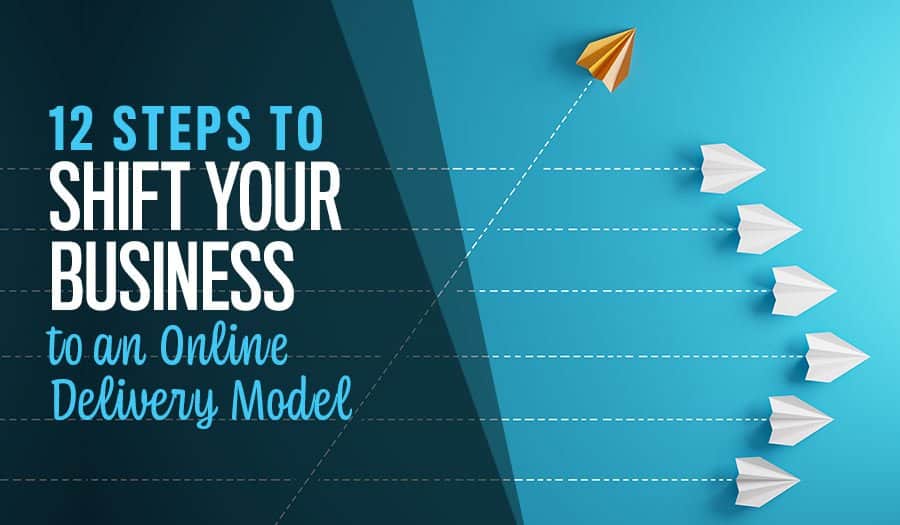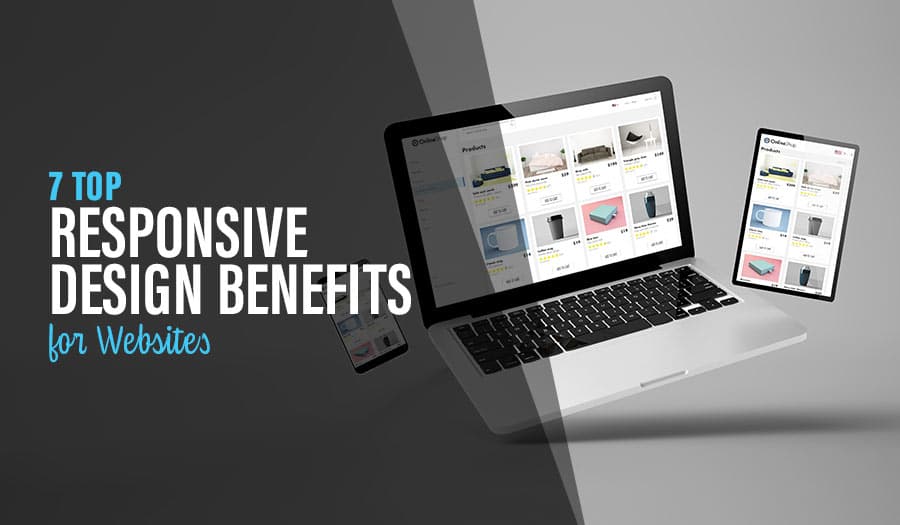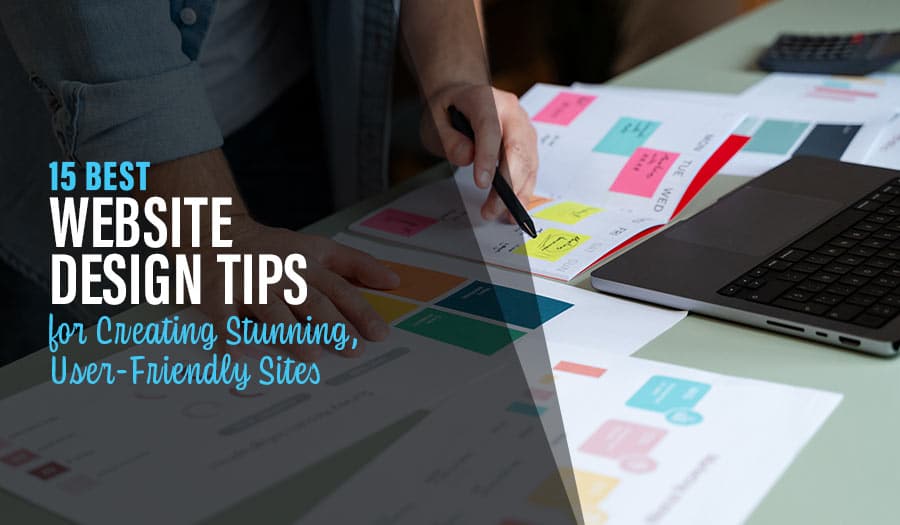Never before have so many stayed home when they would rather be out shopping. The coronavirus pandemic has everyone ordered inside, sheltering in place, working at home, and otherwise not going out where they might encounter other non-household-members. However, the wheels of business have not stopped turning. The population, unable to shop in public safely, have turned to the internet as the solution. Fortunately, we’ve also never before been so prepared to provide online shopping and delivery services.
Businesses are also adapting, transforming once-in-person experiences and on-site workflows into something new. For many local shops, restaurants, and even in-person services, it’s become necessary to transition to an online delivery model. Help your customers to shop for your items or services through an online store, select, pay, and wait for safe, no-contact delivery.
Here are the 12 steps any local business can follow to prepare for online delivery.
- Start With an E-Commerce Website
- Decide Which Items/Packages are Available for Delivery
- Create Detailed Listings for Each Product
- Take New Product Photos from Multiple Angles
- Define Your Delivery Radius
- Local Delivery: Reassign, Hire, or Outsource a Delivery Fleet
- Shipping Packages: Build an Inventory Shipping Workflow
- Define Your Delivery Times and Costs
- Prepare Customer Service Channels and Solutions
- Ensure a Safe Workspace for Shipping or Delivery Staff
- Test-Drive Your Customer Shopping Experience
- Advertise Your New COVID-Safe Delivery Model
12 Steps to Shift Your Business to an Online Delivery Model Business
1. Start With an E-Commerce Website
The first place every business must start is an online venue. When all the customers are online, your website becomes your new storefront. Customers must be able to peruse your items through an online store, fill a virtual cart, and smoothly check out while placing a delivery order. Fortunately, this is a well-trodden path, and many quick e-commerce website solutions are available.
If you don’t already have a website, commission a clean, branded e-commerce design from an experienced developer team. Let them know you’re looking to get online quickly and need a system that is beginner-friendly on the back-end. If you do already have a website but it’s not yet equipped with an e-store, you can commission an upgrade, integrating a new search engine, product pages, and checkout process into your existing website.
2. Decide Which Items/Packages are Available for Delivery
For businesses that have never offered delivery, it’s important to decide what you can and will deliver. This will depend strongly on the type of inventory you offer and the type of delivery you plan to provide. If you are delivering same-day locally, then perishable and refrigerated items can be included, but not if you are shipping through the mail. You may also want to consider the logistics and cost of shipping oversized items as well.
Restaurants may wish to redesign more delivery-friendly recipes. Even local businesses that do not traditionally sell items can get into the game by offering custom packages that recreate an experience. For example, a spa selling home spa kits.
3. Create Detailed Listings for Each Product
Now that you have your delivery product list, it’s time to add them to your e-commerce website as listed items. Listing an item means building a small profile page for it, including a title, photos, a description, package stats, and of course, the price and estimated date of delivery. Once you have delivered a few orders, these pages may also feature customer reviews.
For each product that you will list, create a product page that can be searched for and selected by customers. Be sure to use category and sub-category tags to help your e-commerce search feature helpfully sort product results for customer selection.
4. Take New Product Photos from Multiple Angles
With the product pages ready to be populated, it’s time for a photoshoot. Customers rely on clear, detailed photos from multiple angles in order to make a confident decision. Photograph each item in its package with good lighting from several helpful angles. Photograph the packaging details so customers can “read the back” as they would in the store. Then include a photo of the product next to something else as a size reference.
Edit your photos to remove the backgrounds to keep the content focused on the product itself, and then upload them to each product page. Remember to choose the correct cover photo and to add metadata to each photo in each collection.
5. Define Your Delivery Radius
Now think about how far you can afford to deliver. If you are providing local deliveries, this radius is usually a 40-minute drive from your venue location. If you are shipping through the mail, your radius is much wider but will ultimately be limited by your budget and shipping service. Your delivery radius will determine which customers can effectively shop from you. Be very clear about this radius and use your GMB details to help customers within the radius find you while helpfully excluding yourself from the results of customers who are too far away.
6. Local Delivery: Reassign, Hire, or Outsource a Delivery Fleet
For businesses planning same-day local delivery, you will need a delivery fleet. There are three ways to get yourself a team of mask-wearing drivers. The first and best option is to reassign your current team members. It’s important for employers to continue providing hours and wages whenever possible to the many who might otherwise be out of work. Take care of your workforce by offering anyone without at-home work the opportunity to temporarily become your driver fleet.
If you don’t have the team members to support an in-house fleet, you can alternately hire drivers or contract with a local delivery service. With many out of work, plenty of potential drivers are available both for direct hire and through the networked gig economy.
7. Shipping Packages: Build an Inventory Shipping Workflow
If you are shipping items through the mail, you’ll need a new storeroom workflow to prepare the packages and send them on their way. Decide what shipping service you will use, there are many business shipping options available from the USPS to DHL international, and each will have a different balance of costs and accepted package sizes to deal with. Choose a shipping provider and build a new workflow to get your packages out.
8. Define Your Delivery Times and Costs
With your delivery methods sorted, you will be able to determine the effective costs and delivery times for each order. Make sure your e-commerce site is prepared to offer an accurate automated report of shipping fees and the estimated date of arrival for each package. This needs to be absolutely visible during checkout and easy to understand. Right now, customers will tolerate minimum-order delivery, delivery fees, and longer wait times as long as you tell them ahead of time.
9. Prepare Customer Service Channels and Solutions
There will be customer service demand. You can count on it. While your customers explore your new e-commerce experience, there will be questions, errors, mistakes, and many more issues to deal with along the way. This is unavoidable, so don’t worry when there are hitches in your delivery model roll-out. Instead, prepare for it.
Make sure your website has a live-chat support channel and staff to answer questions. Provide responsive email replies to static messages, and consider a phone tree for customers who are used to calling the store so that no one hears a busy signal.
You may also want to prepare a few go-to solutions for predictable common problems, like late deliveries, broken items, and cancelled orders.
10. Ensure a Safe Workspace for Shipping or Delivery Staff
Once your delivery model is ready, it’s time to consider employee safety. Those who will be asked to handle packages, shipping, and delivery will be out of their homes and potentially exposed to viral risks. Do everything you can to protect your workforce. Provide masks and gloves as needed, launder your own reusable cloth masks to distribute each day, and up your sanitisation standards to keep your staff safe.
11. Test-Drive Your Customer Shopping Experience
Before you open your e-commerce store to the public, make sure to give it a test drive. Ask your dev team to run stress tests to ensure it can hold up against a stampede of online traffic. You should also take a few personal walkthroughs as a customer. Experiment with searching for a specific item and perusing for inspiration. Do a test run of adding items to your cart, removing them, rearranging, changing the count of each item, and editing the colour selection. Make sure you see a smooth, successful purchase process completed and ensure that the order came through accurately for your team to fulfil. Only then is your online delivery model ready for customer use.
12. Advertise Your New COVID-Safe Delivery Model
Finally, with everything from your website to your be-gloved team members ready for action, you should release your Now-Online ad campaign. Let your customers know through your homepage, social media, blog, and anywhere else you make announcements that the shop is once again open for business. Your regular customers will be delighted that your venue and wonderful products (or services) are available, and new customers may discover your brand when looking for local online options for current at-home needs.
Whether you are a restaurant, a retail store, a local service, or even a spa, you can export your business model to an online delivery model during lockdown conditions. Don’t let coronavirus disappoint your customers or stop your revenue. Get online and help us keep the wheels of commerce rolling through this global disaster year. Here at Pixel Fish, we would be honoured to build or upgrade your website for your new online customer experience and delivery services. Contact us today to consult on your online store needs.
Take your business to the next level with a Pixel Fish Website.
Check out some of our latest Website Design projects.
Further Reading
7 Can’t Miss Digital Marketing Trends
Read More
6 Quick Tips on How to Choose a Web Designer
9 Essential E-commerce Website features
11 of the Best Divi Wordpress Theme features you should know
How regularly should my business publish on Social Media?
10 ideas for easy blog topic generation
Divi WordPress Theme
How to Create the Perfect WooCommerce Website
5 Reasons To Turn Your Business Into A Subscription Model
10 Shopping Cart Conversion Failures: Avoid these eCommerce mistakes!
What is a CDN? See how a Content Delivery Network can help your site
Top Tips for Selling Subscription Products Online



